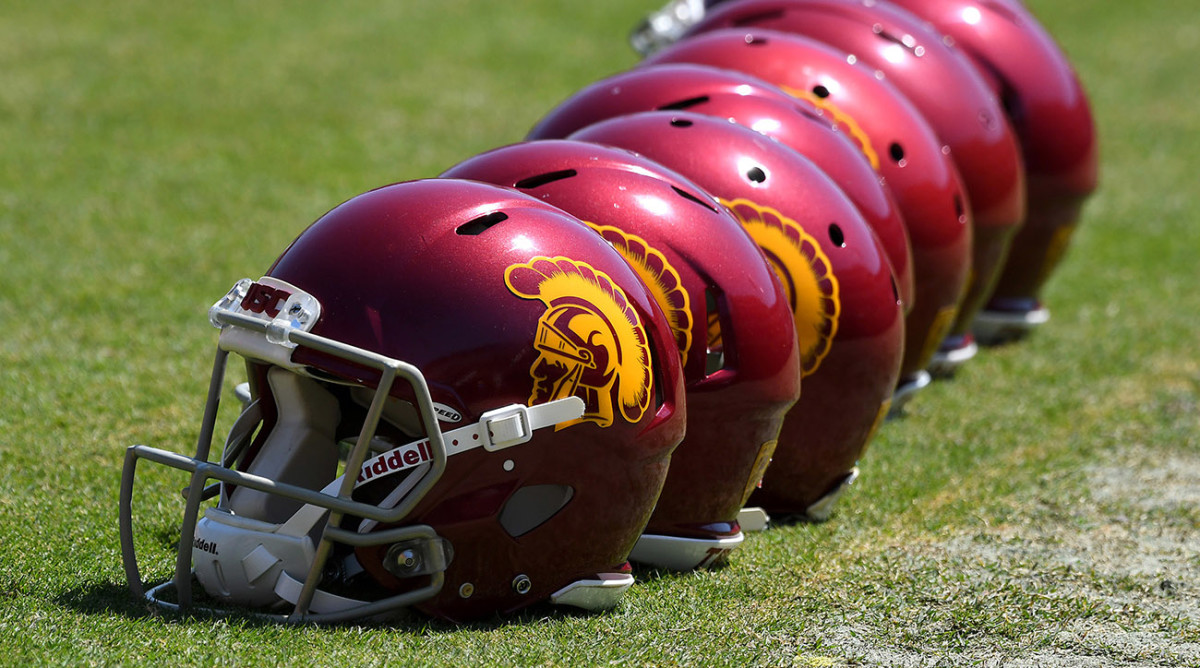Mid-Year Enrollees for 2021 Holding Out Hope for Eligibility in Possible Spring Football Season
When California postponed its fall high school football season, Miller Moss took the news like so many others in the nation’s most populous state—sad, frustrated and maybe even angry. Already one of the nation’s top-ranked quarterbacks in the 2021 recruiting class, Moss lost his chance for a final high school hurrah. There would be no exclamation point on his star-studded career at Santa Ana-based powerhouse Mater Dei.
But as it turns out, he might not lose a season after all.
Moss, a USC commitment planning to enroll in January as a mid-year addition, hopes to play in a winter or spring season next year just weeks after arriving on the Los Angeles campus. And he’s not the only one. Several mid-year enrollees who are committed to Pac-12 and Big Ten programs are expecting to be eligible to participate in postponed 2020 seasons—many of whom learned of the possibility through the coaches recruiting them.

“We don’t have a definite answer, but everything I’ve heard is we could be eligible. The good thing is it might not count as a year of eligibility,” Moss says in an interview with SI this week. “It’s super exciting for me to hear. Nothing like it has ever happened before. It’s a unique opportunity. People talk about losing those (high school) game reps as a senior, but you could add game reps at a higher level.”
In a story published last week on a site covering Ohio State, Buckeyes offensive tackle commitment Jack Sawyer says he opted out of his high school senior season this fall because of the potential to play a winter or spring college football season. He told elevenwarriors.com that OSU coach Ryan Day is pushing hard for NCAA leaders to grant eligibility to mid-year enrollees. “We’re all just hoping and praying that they are gonna let us play,” he said.
The NCAA might dash those hopes. The buzz around this issue has reached one of the highest rule-making committees in NCAA Division I. The Football Oversight Committee explored the situation last week and plans to further examine it during its meeting next week, says West Virginia athletic director Shane Lyons, chair of the Oversight Committee. He personally believes that mid-year arrivals should not be eligible to play a winter or spring season, but he’s not certain what course the committee will choose.
There is strong opposition—especially from those schools still planning to play a fall season—against such an unprecedented ruling. It creates an imbalance among the 10 FBS conferences: the six still working toward a fall season and the four planning to play a season starting in January–March. Is it fair that one group of mid-year freshmen get an extra season? Such a thing could be dangled in recruiting as an inducement to sway prospects. It could be a significant disadvantage for those playing in fall.
“There’s certainly been discussion about eligibility,” says Todd Berry, executive director of the American Football Coaches Association and a member of the Oversight Committee. “Do they get a free year? They are doing it in this academic year. It’s a challenging proposition.”
At the center of the issue is the NCAA’s ruling last week to grant fall sport athletes an extra year of eligibility, no matter if they play in the 2020–21 academic year or not. A mid-year enrollee is technically a fall sport athlete—or is he? “The question is, is the interpretation going to apply for mid-year enrollees?” Lyons says. “There is a recruiting disadvantage for those playing (in the fall). You don’t have the opportunity to say ‘You get to play in the spring if you come here. I don’t think that was the intent of the eligibility (change). It’s about those who were already enrolled.”
Normally, mid-year enrollees can participate in bowl or CFP practices in December and January but are not eligible to play in games. Enrolling at the mid year is a hot trend across the college football landscape. Some programs enroll in January upwards of 10 members of their signing class. The move provides freshmen an extra five months to adjust to college life before games begin, giving them the opportunity to train with their new team in winter workouts and spring practice.
Now, there’s a chance that they can play a game within a month of their arrival on campus. That brings with it other issues. While Moss’s high school senior season is canceled, other states are attempting to play high school ball this year. If a mid-year enrollee is eligible for a spring season, that player could conceivably participate in three seasons of football in a single year (fall ’20 in high school and spring ’21 and fall ’21 in college). That raises serious safety and health concerns, says Lyons.
These mid-year freshmen—and junior college transfers—face another hurdle in playing a spring season: time. The normal path for an incoming college player begins with an arrival on campus in early June (or, in the mid-year, January). That’s, at the least, three months of time before the season opener and at most eight months.
David Morris, a quarterback coach and founder of Mobile-based QB Country, has experience in playing a football season after just a month of training on campus. He played in the days before summer training became a mainstay in the college game. A walk-on freshman quarterback at Ole Miss in 1998, he spent just a few weeks on campus before playing in the Rebels season opener. “I was definitely overwhelmed with the playbook. There’s so much install,” he says. “The amount of football you learn that first fall is mind blowing. You’re running inside zone to the ‘shade’ and you don’t know what ‘shade’ is. I remember it was a lot.”
Back in California, Moss is hopeful to play in the spring, but he knows in a COVID-19 world that virtually everything is unpredictable and changeable—even after the NCAA rules on the matter. That could happen next week or the next, Lyons says. The Oversight would need to make a recommendation to the D-I Council, which next meets on Sept. 16.
Meanwhile, Moss believes mid-year enrollees will have a better chance of being granted immediate eligibility if all conferences play in the spring. For now, that’s not happening. Key words: for now.
“It’s just such a fluid time,” he says.
